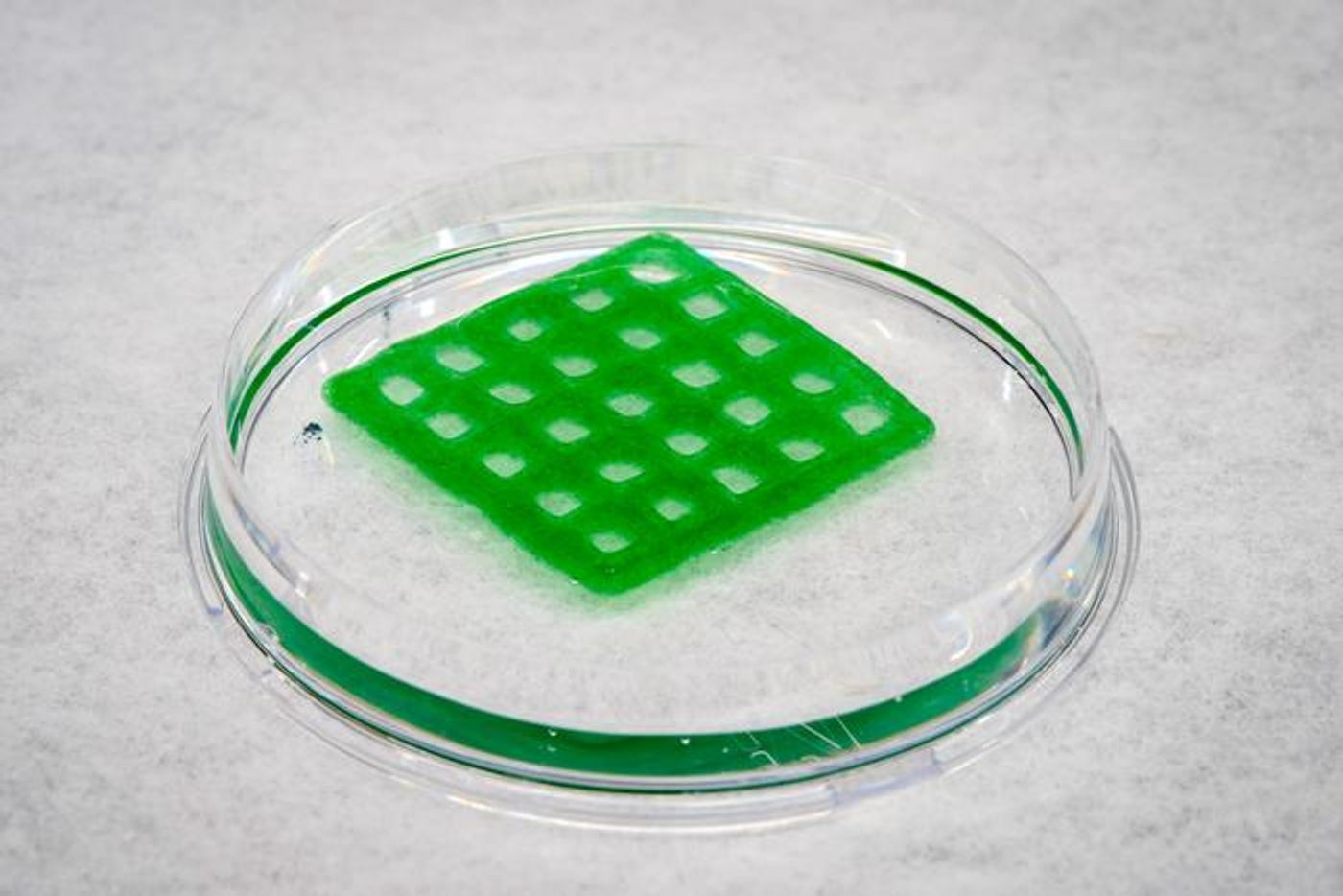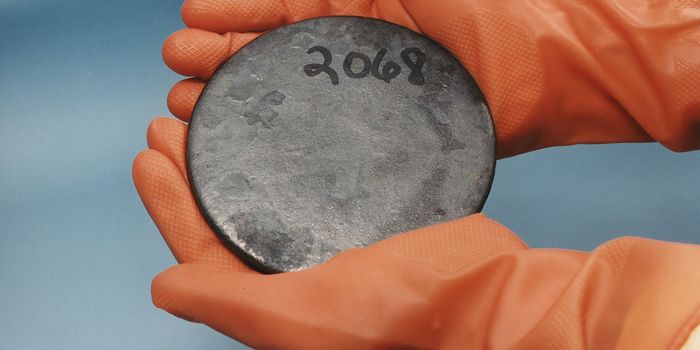Engineered Living Material: A Novel Approach to Sustainable Water Decontamination
A recent study published in Nature Communications examines a novel type of “engineering living material” that can be used to decontaminate water by converting organic pollutants into harmless molecules. The material is comprised of a 3D-printed design with a seaweed-based polymer merged with genetically modified bacteria that creates an enzyme responsible for the decontamination. Once the decontamination is complete, the bacteria self-destruct when they encounter a molecule known as theophylline. This research was led by the University of California San Diego (UC San Diego) and holds the potential to help reduce water pollution without harmful side effects to the environment.
Image of a novel type of “engineered living material” comprised of a seaweed-based polymer and mixed with genetically engineered bacteria. This new material could allow for a more environmentally friendly solution to decontaminate water. (Credit: David Baillot/UC San Diego Jacobs School of Engineering)
“What’s innovative is the pairing of a polymer material with a biological system to create a living material that can function and respond to stimuli in ways that regular synthetic materials cannot,” said Dr. Jon Pokorski, who is a professor of nanoengineering at UC San Diego and a co-author on the study.
For the study, the researchers first made a gel by hydrating a seaweed-based polymer known as alginate, followed by combining it with cyanobacteria, which is a water-based photosynthetic bacteria. Once mixed, the gel was then inserted into a 3D printer where the researchers found a geometric shape that offers the highest surface area to volume ratio. They found this ratio increases the effectiveness of the material’s decontamination abilities, which the cyanobacteria conduct via genetic engineering by producing a decontaminating enzyme known as laccase.
Previous research has indicated that laccase is effective at neutralizing a myriad of organic pollutants, including dyes, which the team successfully removed from a water solution through this new material. Once the neutralization is complete, the researchers add theophylline to kill off the bacteria.
“The living material can act on the pollutant of interest, then a small molecule can be added afterwards to kill the bacteria,” said Pokorski. “This way, we can alleviate any concerns about having genetically modified bacteria lingering in the environment.”
Going forward, the researchers hope to design bacteria with the ability of self-destructing on their own without outside influence.
What new discoveries will researchers make about water decontamination in the coming years and decades? Only time will tell, and this is why we science!
As always, keep doing science & keep looking up!
Sources: Nature Communications, EurekAlert!, ScienceDirect, Wikipedia, National Library of Medicine, National Library of Medicine (1)









